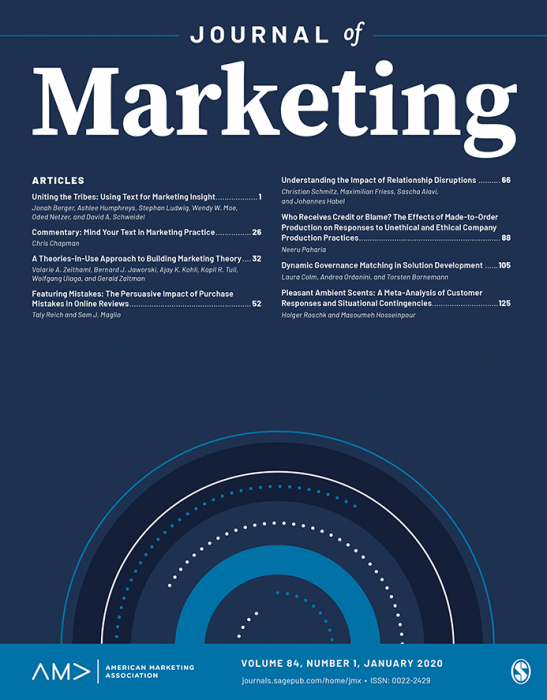二次销售:超越销售与客户的关系
IF 11.5
1区 管理学
Q1 BUSINESS
引用次数: 4
摘要
一项研究对销售人员在销售环境中的行为进行了不引人注目的观察,得出了一个新的见解:销售人员与次要实体(如核心销售人员与客户二元关系之外的对象和人员)互动的方式,可能会提高销售人员对客户的销售效率。基于这一认识和社会利益理论,本研究引入了二级销售的构建。它指的是销售人员以一种方式与次要实体进行交互,这种方式向重点客户表明销售人员重视这些实体。使用多种方法和数据来源的四项后续研究的结果模式表明,一般来说,二次销售减少了焦点客户对销售人员推荐的抗拒,从而导致更高的销售收入和客户满意度。高说服知识的客户(与低说服知识的客户相比)更容易受到涉及公司财产的二次销售的影响,而对涉及非重点客户的二次销售的影响较小。除了减少重点客户对销售建议的抗拒外,二次销售还有助于主要销售(针对重点客户)在更大程度上减少客户的抗拒。总体而言,研究结果证明了二次销售在促进销售收入和客户满意度方面的普遍和有影响力的作用。本文章由计算机程序翻译,如有差异,请以英文原文为准。
Secondary Selling: Beyond the Salesperson–Customer Dyad
A study involving unobtrusive observations of salespeople's behaviors in sales settings surfaces a novel insight: a salesperson's selling effectiveness with a customer may be enhanced by the way the salesperson interacts with secondary entities, such as objects and people outside the core salesperson–customer dyad. Based on this insight and social interest theory, this research introduces the construct of secondary selling. It refers to a salesperson interacting with secondary entities in a manner that indicates to a focal customer that the salesperson values these entities. The pattern of results from four follow-on studies using multiple methods and data sources indicates that, in general, secondary selling reduces a focal customer's reactance to a salesperson's recommendations, which leads to higher sales revenue and customer satisfaction. Customers with high persuasion knowledge (compared with customers with lower persuasion knowledge) are more favorably influenced by secondary selling involving company property but less favorably influenced by secondary selling involving nonfocal customers. In addition to reducing a focal customer's reactance to sales recommendations, secondary selling also helps primary selling (targeted at a focal customer) reduce the customer's reactance to a greater extent. Overall, the results provide evidence of the pervasive and influential role of secondary selling in boosting sales revenue and customer satisfaction in sales exchanges.
求助全文
通过发布文献求助,成功后即可免费获取论文全文。
去求助
来源期刊

Journal of Marketing
BUSINESS-
CiteScore
24.10
自引率
5.40%
发文量
49
期刊介绍:
Founded in 1936,the Journal of Marketing (JM) serves as a premier outlet for substantive research in marketing. JM is dedicated to developing and disseminating knowledge about real-world marketing questions, catering to scholars, educators, managers, policy makers, consumers, and other global societal stakeholders. Over the years,JM has played a crucial role in shaping the content and boundaries of the marketing discipline.
 求助内容:
求助内容: 应助结果提醒方式:
应助结果提醒方式:


